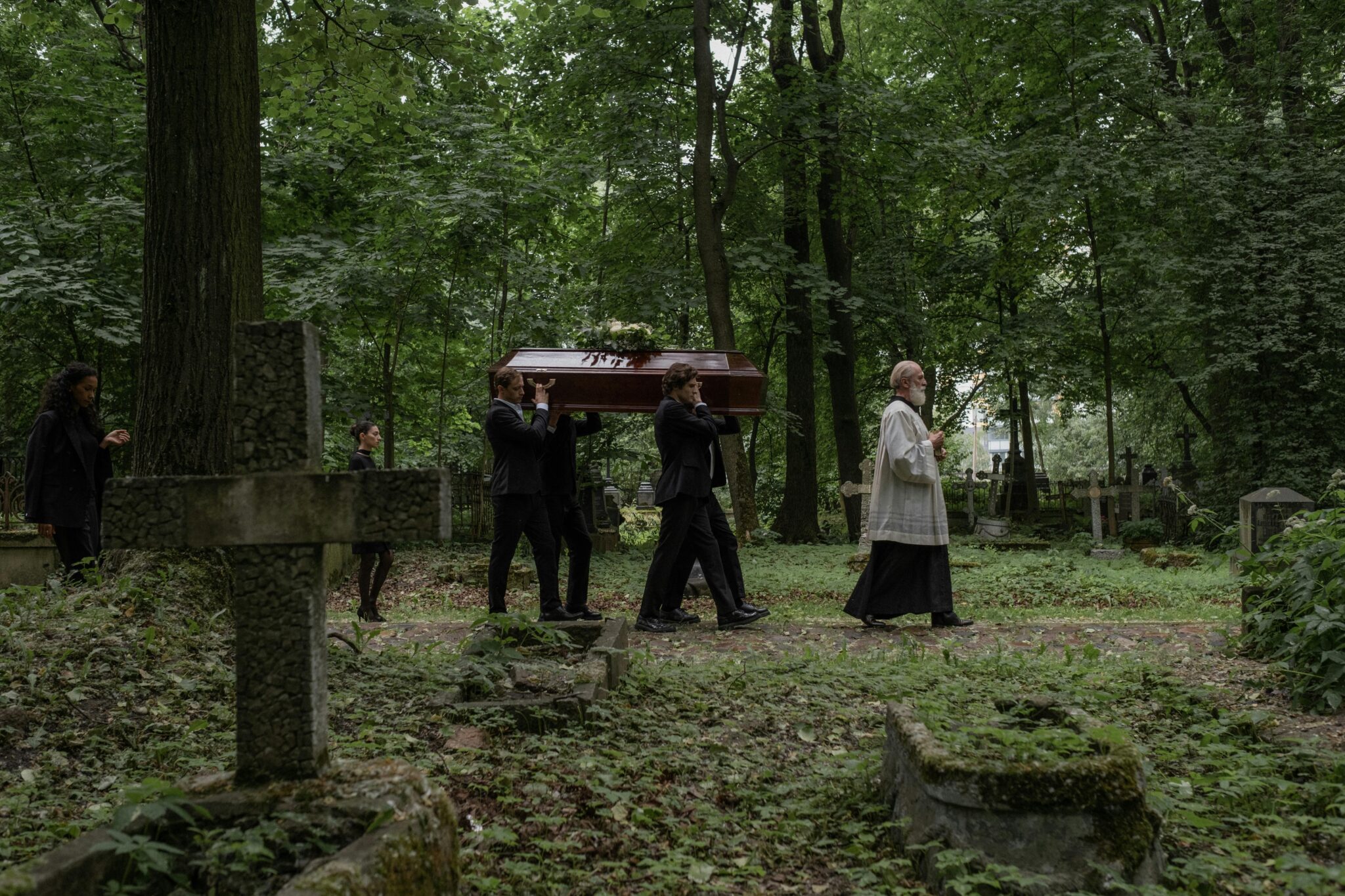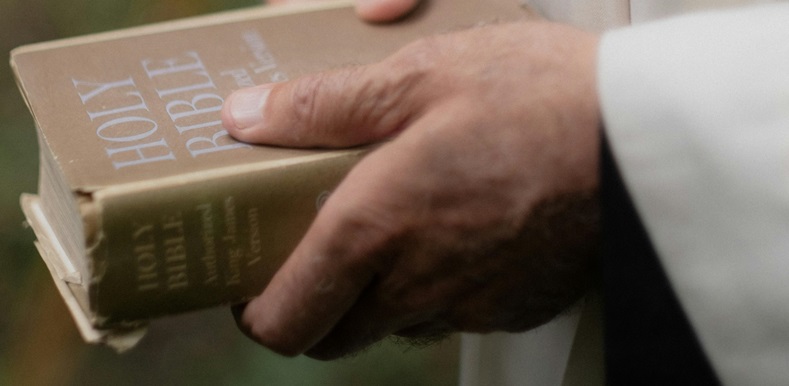Keeping you informed on News and Views within the funeral planning industry
Advice on How to Plan a Catholic Funeral in Advance

Planning for the future is a responsible and loving gesture that can offer peace of mind for you and your family. A Catholic funeral is a sacred ritual that reflects a life lived in faith. Planning a Catholic funeral service involves practical decisions and spiritual customs, all of which help guide the departed soul toward eternal peace and provide comfort to the grieving family.
In this guide, we’ll walk you through the steps of planning a Catholic funeral in advance, from choosing the right readings and hymns to understanding the role of the priest and selecting meaningful elements for the service.
Why Plan Your Catholic Funeral in Advance?
A Catholic funeral reflects a life of faith and provides comfort to your family by offering them a ceremony that respects your beliefs. Planning your funeral in advance allows you to:
- Ensure your wishes are respected: you can choose the type of service, music, readings and specific traditions that reflect your life and faith.
- Relieve family stress: when the time comes, your loved ones won’t have to make difficult decisions or bear the financial burden of arranging your funeral. By planning ahead, you ensure that they can focus on grieving rather than logistics.
- Lock in costs: funeral costs continue to rise, but with a prepaid funeral plan, you can secure today’s prices and avoid unexpected future expenses.
Understanding Catholic Funeral Rituals
The rituals and traditions of a Catholic funeral reflect the importance of faith, community and the promise of eternal life.
At the heart of a Catholic funeral is the Funeral Mass, a central liturgical celebration that follows the same structure as any Mass. The focus is on praying for the person who has died, asking God to welcome them into His eternal kingdom, and offering comfort to the grieving family. The funeral rites typically include:
- Vigil service (wake): this is usually held the evening before the Funeral Mass and is an opportunity for family and friends to come together in prayer and reflection. It often includes scripture readings, prayers and eulogies. While not part of the formal Mass, it sets the tone for the day ahead.
- Catholic Funeral Mass: the Mass itself is the most significant part of the Catholic funeral. It includes the Liturgy of the Word (scripture readings and the homily) and the Liturgy of the Eucharist (the consecration of the bread and wine). During the Mass, family and friends gather to offer their prayers and support for the deceased’s journey to eternal life.
- Committal service: after the Funeral Mass, the body is taken to its final resting place, where the committal service takes place. This part of the ritual involves prayers for the deceased as the body is laid to rest, whether in a grave or a cremation plot.
The Role of the Priest/Clergy
In a Catholic funeral, the priest or deacon plays a central role, both as the spiritual leader and as the person who leads the Mass. Their guidance will help steer the funeral in a way that honours your life and faith while comforting the family during a difficult time.
The priest will typically assist with:
- The planning of the Mass: from selecting scripture readings to choosing hymns, the priest helps ensure the liturgy reflects your life and spiritual journey.
- Conducting the Mass: the priest delivers the sermon, presiding over the Eucharist and offering prayers.
- Providing spiritual guidance: the priest offers counsel to the grieving family and helps them process their emotions through prayer and reflection. They may also provide guidance on the significance of the funeral rites and any additional needs the family may have during the mourning period.
The priest’s presence is vital for the liturgy and as a source of comfort, offering spiritual leadership and support for the family.
The Key Elements of a Catholic Funeral

There are several key elements of a catholic funeral to help create a meaningful and reverent service:
1. Funeral Mass
The Funeral Mass is a formal setting for family and friends to gather in prayer, offering your soul to God and seeking His mercy:
- Liturgy of the Word: this part of the Mass includes scripture readings from the Old and New Testaments, along with a Gospel reading.
- Liturgy of the Eucharist: this is the second part of the Mass where the priest consecrates the bread and wine, turning them into the body and blood of Christ. Family members may choose to participate as Eucharistic Ministers, assisting in the distribution of communion.
The Funeral Mass serves as both a prayer for the deceased and a celebration of God’s grace, inviting everyone present to reflect on the hope of eternal life.
2. Reading and Scripture
The readings reflect your life, faith and relationship with God. The Catholic Church provides a selection of scripture passages that are often chosen by the priest following your recommendations.
Readings include:
- Old Testament reading: this typically focuses on themes of comfort, hope and the promise of eternal life. Psalms are also commonly used during this part of the service to offer spiritual solace.
- New Testament reading: this reading often focuses on the teachings of Jesus Christ on topics such as salvation, resurrection and eternal life. Some people also choose readings from the letters of St Paul, which offer encouragement and hope for Christians.
- Gospel reading: this is the most significant reading and is taken directly from the Gospels. It usually includes words spoken by Jesus himself and highlights themes of resurrection and the promise of eternal life.
When selecting the readings, it’s important to consider your relationship with God and any verses that may have been meaningful to you in life.
3. Music and Hymns
Music plays an integral role in a Catholic funeral, offering a sense of reverence and an opportunity for communal prayers. Hymns and sacred music uplift the soul and set a respectful tone for the Mass.
- Hymns: traditionally, hymns such as “Ave Maria”, “Amazing Grace” and “On Eagle’s Wings” are chosen for Catholic funerals, as they are comforting and reflect themes of faith, resurrection and hope. You may also select your favourite hymns or ones that reflect your personality and life.
- Instrumental music: you may choose to include instrumental music, such as organ or classical pieces, during the entrance procession or as a reflection during communion.
It can be useful to work closely with the parish’s music director to ensure the chosen hymns and music are appropriate for the liturgical setting.
4. Eulogy or Words of Remembrance
In Catholic funerals, eulogies are typically not given during the Mass itself, as the focus is on the liturgy and the prayers for the deceased. However, many people opt for Words of Remembrance, which are often shared either during the vigil service or at the funeral reception following the Mass.
It’s important to coordinate with the priest to ensure any remarks or eulogies are appropriate within the context of the Catholic funeral rites.
Steps to Planning a Catholic Funeral

1. Choosing the Right Funeral Home and Cemetery
Selecting a funeral home and cemetery that aligns with Catholic traditions is one of the first steps in planning a Catholic funeral in advance.
When choosing a funeral home, it’s important to select one that understands the Church’s requirements and can facilitate all aspects of the funeral, including transportation, embalming and coordination with the Church. The funeral home will assist with arranging the visitation or vigil, ensuring the service adheres to Catholic customs.
Catholic cemeteries are specially designed for the burial of the faithful and often have distinct rules regarding the burial process. Catholic tradition generally calls for the burial of the body, as it reflects the Church’s belief in the resurrection of the body.
Some Catholic cemeteries also allow cremation, provided it is done respectfully, and the ashes are interred. Check with the cemetery regarding its policies on burial versus cremation and any specific guidelines they may have for services.
2. Discussing Burial or Cremation
If a burial is chosen, the body is typically placed in a grave or mausoleum, and the committal service will be held at the cemetery. This is in keeping with the belief that the body is a temple of the Holy Spirit and should be laid to rest in a sacred space.
If cremation is chosen, the Church requires that the ashes be treated with respect and should not be scattered or divided. Instead, they should be kept in a sacred place, such as a columbarium or burial plot. It’s important to discuss the options with the priest, ensuring the decision aligns with Catholic teaching.
3. Selecting Pallbearers and Other Roles
You can ask certain family members or close friends to take on specific roles to help with the service. These roles include:
- Pallbearers: responsible for carrying the coffin from the church to the hearse and from the hearse to the gravesite.
- Readers: you can ask family members or friends to read scripture passages. If you’re selecting readers, make sure they are comfortable with reading aloud and can do so with reverence.
- Eucharistic ministers: assist with the distribution of communion during the Mass.
- Gift bearers: family members can be selected to bring bread and wine to the altar as part of the Offertory.
4. Funeral Reception or Gathering
Many people choose to host a reception or gathering after the Funeral Mass and committal service to continue the remembrance and offer fellowship.
The reception can be held at a family member’s home, a parish hall or a venue near the cemetery. Offering light refreshments or a meal can help guests feel welcomed.
While the primary focus of the reception is fellowship and comfort, it’s also a time for loved ones to share memories and tributes.
How Long Does It Take to Plan a Catholic Funeral for Someone with a Prepaid Funeral Plan?
The timeline for planning a Catholic funeral can vary depending on several factors, such as the availability of the parish priest, the funeral home and the family’s specific wishes. However, when a prepaid funeral plan is in place, many of the details are already pre-arranged, which can significantly streamline the process. Below, we outline the general time it takes to plan a Catholic funeral:
Initial Arrangements
- Notify the priest or deacon: even though the prepaid funeral plan includes details for the Funeral Mass, it’s important to inform the parish priest or deacon named in the funeral plan. This ensures they are aware of plan’s specifics and can begin making the arrangements for the service.
- Funeral home coordination: if the prepaid funeral plan specifies a Catholic funeral home, contact them to arrange the transportation of the deceased, prepare the body for viewing (if desired) and finalise details for the wake or vigil service.
Finalising Details
- Funeral Mass planning: since your loved one will have already selected the readings, hymns and other elements of the funeral service in their prepaid plan, your family should confirm with the priest to ensure everything is in place. The priest will assign roles for family members and friends, such as pallbearers, readers and Eucharistic ministers, as outlined in the plan.
- Cemetery and burial arrangements: if the prepaid funeral plan includes cemetery and burial arrangements, contact the cemetery to confirm the gravesite details and ensure everything is set for the committal service.
Confirmation of Arrangements
- Confirmation with clergy and funeral home: confirm all details with the priest and the funeral home, ensuring the schedule for the vigil, Mass and committal service is set. Finalise any requests for floral arrangements, special music or personal tributes, which may or may not be included in the prepaid plan.
- Communicate with family and friends: let family and friends know the final funeral schedule, the location of services and any additional information they may need. If there are specific instructions in the plan regarding attendance or participation, be sure to pass this along to loved ones.
The Funeral Mass and Committal
The funeral typically takes place on the seventh day or sooner, depending on the availability of the priest and the funeral home.
Although there are general guidelines for the timing of a Catholic funeral, it’s important to remember that the process can be flexible. The priest or deacon will work with your family to find a time that best suits them and respects the sacred nature of the funeral rites.
If you need help preplanning a Catholic funeral or want to find out about our prepaid funeral plans, get in touch with Golden Leaves to ensure the service is a meaningful tribute to your loved one’s life and faith. Contact us today by calling 0800 85 44 48 or request a callback.












Share this content...